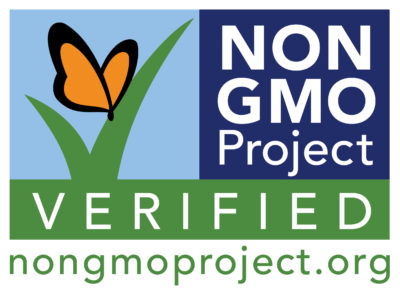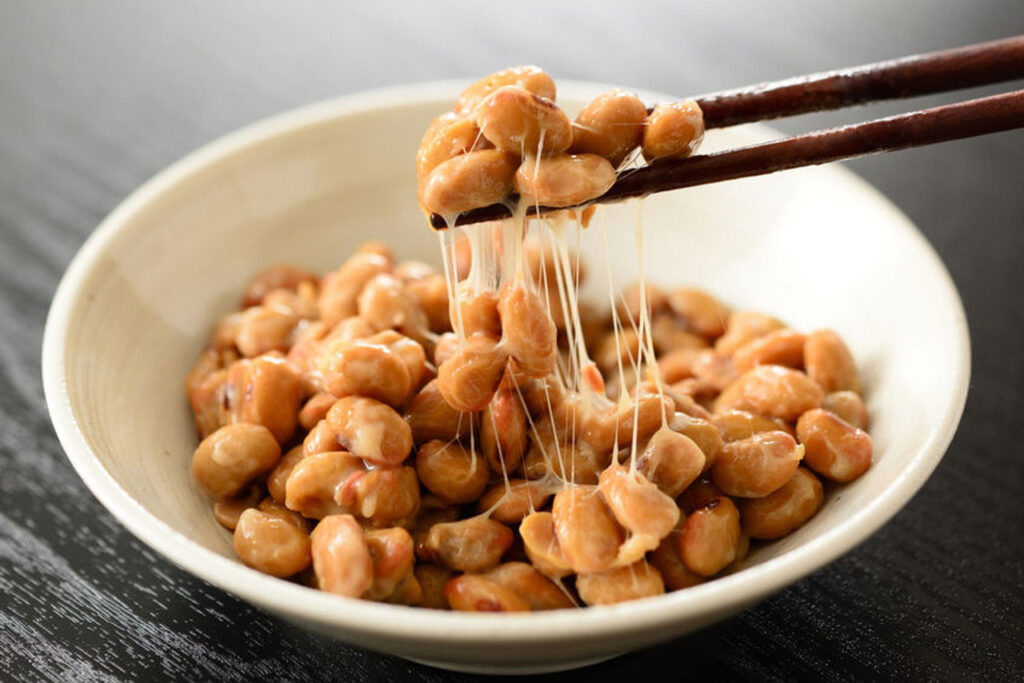At Laura Soybeans, we grow only the highest quality soybeans. Each and every one of our products is grown, harvested, processed and packaged on our fifth-generation family farm.
This ensures a soybean quality that you can trust comes from our farm to your table.
The same is true for our natto/sprouting soybeans.
Not sure what the difference is between our Laura Soybeans and natto/sprouting soybeans? Well, there are actually some notable characteristics that make natto soybeans special.
We’re sure you’ll love this product as much as our original Laura Soybeans.
What are natto soybeans?
As we said previously, natto soybeans have some key differences with general soybeans. Natto soybeans are used to make natto. That’s a fermented soybean. We’ll describe natto in more detail next.
Natto soybeans are small and have hard seed coats. Most natto is produced with smaller soybeans.
So, what’s natto?
Natto is a fermented soybean that’s popular in Japan, specifically as a breakfast meal.
According to Shape, natto is a healthy food product that is made by combining a soybean with beneficial bacteria and allowing it to ferment for an extended period of time. This is also how other healthy foods with beneficial bacteria are made.
The result of the fermentation process is a preserved soybean and a sticky, slimy food with an earthy flavor. Shape notes that batches of natto can taste a little different each time it’s made because the fermentation process isn’t always the same.
New York Times reporter Richard Schiffman describes the flavor as a chopped liver and cottage cheese crossover.
Natto is very healthy
In an article, Schiffman spoke to several scientists and nutritionists who speak very highly of the natto’s health benefits.
One of those scientists, microbiologist and food entrepreneur Ann Yonetani, says natto is one of the most potent sources of healthy bacteria out there. Dr. Yonetani says that, in Japan, children are encouraged to eat their natto like American children are encouraged to eat healthy vegetables, like spinach.
Digestive health
The fermentation process used to create natto promotes the growth of probiotics, according to Healthline. Probiotics are a form of healthy bacteria that, among other benefits, can help make it easier for your body to absorb nutrients in foods.
Bone health
Natto, Healthline states, is has a lot of protein and many vitamins and minerals. Natto could promote bone health because it contains high levels of vitamin K2, which one doctor told Schiffman in the New York Times “works like a theater usher by directing calcium to the bones.”
Heart health
One of the other notable benefits of natto is that it has the enzyme nattokinase. Dr. Ralph Holsworth says in the New York Times article that nattokinase provides blood-thinning benefits that could lessen heart attack and stroke severity.
Natto could promote bone health because it contains high levels of vitamin K2, which another doctor told Schiffman “works like a theater usher by directing calcium to the bones.”
Healthline suggests natto could help decrease cholesterol and blood pressure levels and decrease heart disease risk because of its fiber, probiotics, vitamin K2 and nattokinase.
Immune system health
Those same probiotics that promote digestive health could also strengthen your immune system, according to Healthline. All the healthy bacteria in your system not only helps stop harmful bacteria from growing there, but also it could boost the body’s natural antibody production.
Probiotics also lessen the risk of infection and could help you recover from sickness faster.
Healthline notes that nato has several vitamins and minerals important to immune system health, including vitamin C, iron, zin, selenium and copper.
Make your own natto
Why not try making natto yourself with our Laura Soybeans natto/sprouting soybeans?
This natto recipe comes from Healthline.
Ingredients
– 1.5 pounds of soybeans
– Water
– Natto spores starter or a package of store-bought natto
– Large cooking pot
– Sterilized, oven-safe dish with lid
– Kitchen thermometer
– Pressure cooker (optional)
Instructions
1. Wash the soybeans under running water and put them in the pot.
2. Pour fresh water over the beans until they are submerged. Let them soak for 9 to 12 hours. Use about 3 parts water to 1 part soybeans.
3. Drain the beans, add fresh water and boil for about 9 hours. Or, use a pressure cooker and cook for 45 minutes.
4. Drain the cooked beans. Put them in a sterilized, oven-safe dish. To sterilize the dish, you can boil water in it for at least 10 minutes before you use it.
5. Add the natto starter to the beans by following the package instructions. Or, you can use store-bought natto and mix it in with the beans.
6. Stir it all together using a sterilized spoon. Make sure all beans come into contact with the starter.
7. Cover the dish and put it in the oven to ferment for 22 to 24 hours at 100 degrees (F).
8. Cool the natto for a couple of hours. Age the natto in your refrigerator for about 24 hours before eating.
Healthline notes that natto typically is aged anywhere from 24 to 96 hours. If you’re in a hurry, though, you can serve after about a minimum of three hours.
Store leftovers in the freezer.
Add natto to other foods
If the texture of natto doesn’t seem to be your thing, then you can always add it to other foods.
In Japan, natto is often paired with rice. Shape recommends rice and spicy Japanese mustard or in miso soup. Other recommended foods to which you can add your natto include pasta dishes, suchs or any dish that features soy sauce as a prominent flavor.
Natto soybeans are great for sprouting, too
Natto soybeans aren’t just ideal for marking natto. Typically, they have slightly higher germination rate. That’s what makes them good for sprouting.
Sprouts from the natto soybeans are much smaller than those you’d see from larger Laura soybeans. This makes them easier to work with in recipes like stir frys.
Interested in giving it a try? Read our easy, step-by-step blog post on sprouting your own soybeans.
Find natto/sprouting soybeans
We have both Laura and natto/sprouting soybeans available to purchase. Both soybean types are non-GMO developed by traditional cross-breeding that has been used for centuries.
Contact Laura Soybeans
All Laura Soybeans products are non-GMO, naturally bred for their characteristics. We’re vegan-endorsed and our products provide 100 percent natural protein.
If you have any questions about our products, please reach out via our online contact form or by calling (515) 583-2198.


